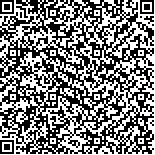| Quote
: |
易丽贞,杨俊,谢涛,吴雪芬,刘欣,岳增辉.隔药饼灸对动脉粥样硬化易损斑块兔腹主动脉TLR2、TLR4、NF-κB表达的影响[J].湖南中医药大学学报英文版,2021,41(3):364-369.[Click to copy
] |
|
| |
|
|
| This paper
:Browser 1935times Download 541times |
| 隔药饼灸对动脉粥样硬化易损斑块兔腹主动脉TLR2、TLR4、NF-κB表达的影响 |
| 易丽贞,杨俊,谢涛,吴雪芬,刘欣,岳增辉 |
| (湖南中医药大学针灸推拿学院, 湖南 长沙 410208) |
| 摘要: |
| 目的 观察隔药饼灸对动脉粥样硬化(atherosclerosis,AS)易损斑块兔Toll样受体2(toll like receptor 2,TLR2)、Toll样受体4(toll like receptor 4,TLR4)、核因子κB(nuclear factor kappa B,NF-κB)变化的影响,探讨其可能的作用机制。方法 将60只普通级新西兰兔随机分为空白组、模型组、直接灸组、隔药饼灸组、药物组,每组12只。通过高脂饲养+腹主动脉球囊损伤制作兔AS易损斑块模型。采用免疫组化法观察腹主动脉TLR2、TLR4、NF-κB的抗原活性;透射电镜观察腹主动脉超微结构。结果 与空白组比较,模型组、直接灸组、隔药饼灸组和药物组TLR2、TLR4、NF-κB灰度值均显著降低(P<0.05或P<0.01);与模型组比较,直接灸组、隔药饼灸组和药物组TLR2、TLR4、NF-κB灰度值均显著升高(P<0.05或P<0.01);与直接灸组相比,隔药饼灸组和药物组TLR2、TLR4、NF-κB灰度值明显升高(P<0.05或P<0.01)。电镜下观察,模型组较空白组主动脉内皮细胞病变更严重,内皮细胞内含大量脂质;直接灸组、隔药饼灸组、药物组内皮细胞大多形态正常,有少量脂质沉积。结论 隔药饼灸稳定AS易损斑块的机制可能是通过降低TLR2、TLR4、NF-κB的抗原活性,下调其表达,以延缓AS的形成。 |
| 关键词: 隔药饼灸 动脉粥样硬化 易损斑块 Toll样受体2 Toll样受体4 核转录因子κB |
| DOI:10.3969/j.issn.1674-070X.2021.03.008 |
| Received:October 13, 2020 |
| 基金项目:国家自然科学基金面上项目(81874430);湖南省研究生创新项目(CX20200779,CX20200753,CX20200778)。 |
|
| Effects of Herbal Cake Separated Moxibustion on Expression of Abdominal Aorta of TLR2, TLR4, NF-κB in Rabbits with Vulnerable Atherosclerotic Plaque |
| YI Lizhen,YANG Jun,XIE Tao,WU Xuefen,LIU Xin,YUE Zenghui |
| (College of Acupuncture and Massage, Hunan University of Chinese Medicine, Changsha, Hunan 410208, China) |
| Abstract: |
| Objective To observe the effects of herbal cake separated moxibustion on the changes of toll like receptor 2 (TLR2), toll like receptor 4 (TLR4) and nuclear factor kappa B (NF-κB) in vulnerable plaques of atherosclerosis (AS) in rabbits, and to explore the possible mechanism. Methods 60 ordinary New Zealand rabbits were randomly divided into the blank group, the model group, the direct moxibustion group, the herbal cake separated moxibustion group and the medicine group, with 12 rabbits in each group. AS vulnerable plaques rabbit model was established by feeding high-fat diet and balloon injury of abdominal aorta. Immunohistochemistry was used to observe the antigen activity of TLR2, TLR4 and NF-κB in abdominal aorta. A transmission electron microscope was used to observe the ultrastructure of the abdominal aorta. Results Compared with the blank group, the grey levels of TLR2, TLR4 and NF-κB were significantly reduced (P<0.05 or P<0.01) in the model group, the direct moxibustion group, the herbal cake separated moxibustion group and the medicine group; compared with the model group, the grey levels of TLR2, TLR4 and NF-κB were significantly raised (P<0.05 or P<0.01) in the direct moxibustion group, the herbal cake separated moxibustion group and the medicine group; compared with the direct moxibustion group, the grey levels of TLR2, TLR4 and NF-κB were significantly raised (P<0.05 or P<0.01) in the herbal cake separated moxibustion group and the medicine group. Under the electron microscope, compared with the blank group, the pathological changes of aortic endothelial cells were more serious and contained a large amount of lipid in model group; most of the endothelial cells in direct moxibustion group, the herbal cake separated moxibustion group and the medicine group, had normal morphology with a small amount of lipid deposition. Conclusion The mechanism of herbal cake separated moxibustion to stabilize vulnerable plaques of AS may be through reducing the antigen activity of TLR2, TLR4, NF-κB, and down regulating their expression, so as to delay the formation of AS. |
| Key words: herbal cake separated moxibustion atherosclerosis vulnerable plaque toll like receptor 2 toll like receptor 4 nuclear factor kappa B |
|

二维码(扫一下试试看!) |
|
|
|
|


